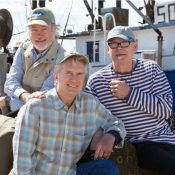Granite rock is dense, and that’s what the advocates propose to use to build their small jetty and seawall at Figure Eight Island.
The draft environmental impact statement on this proposed terminal groin is dense as well. It is stacked full of nearly 1,000 pages of often-conflicting statements, fancy sci-fi looking full-color empirical models and wishful pie-in-the-sky cost and benefit analysis.
Supporter Spotlight
Its authors are consultants paid by the Figure Eight Island Homeowners Association. They have thrown everything possible into the document to try to justify spending millions of dollars of property owner’s money to build a 900-foot seawall and 700-foot terminal groin at Rich Inlet.
For years, this proposed solution to natural erosion on the northern end of the island has been discussed. But up until now, details of the proposal were lacking. It was billed as a low-cost permanent solution to the erosion problems on the island that would save property owners a lot of money paying for repeated beach nourishment.
Island property owners and government regulators should wade through this nearly impenetrable document and evaluate the validity of these salesmen-like claims.
If you read the fine print, it turns out that this project is not designed to prevent damage to oceanfront property that is going to occur routinely in storms. The groin and seawall will wash away the northern tip of the island, and lots that ring the inlet will be cut nearly in half by erosion. There are no safeguards for the houses and lots on the back of the island either, other than giving them a false sense of temporary security by pumping some sand on the shoreline.
Clearly, the project is no permanent solution to erosion. Millions of dollars of beach nourishment is still needed both along the oceanfront and backside of the island as much as every four years—more often if there are storms.
Supporter Spotlight
No one will save any money if this structure is built. In fact, the project simply escalates the costs of nourishment over and beyond what the island has been spending each year since 1993.
All these conclusions can be drawn from the volumes of material stuffed into this document.
Simply put, the draft environmental study that is now available is informative once you can cut through the chaff and get to its meat. The authors as cheerleaders for the project must be counting on the fact that people won’t go to the trouble of digesting the information and will be superficially impressed that they composed a document that rivals War and Peace in its thickness.
They should not assume that people will be so naive. Those that are being asked to pay for this project for three decades to come or approve its regulatory permits are unlikely to be as “dense” as those granite rocks or this document.







